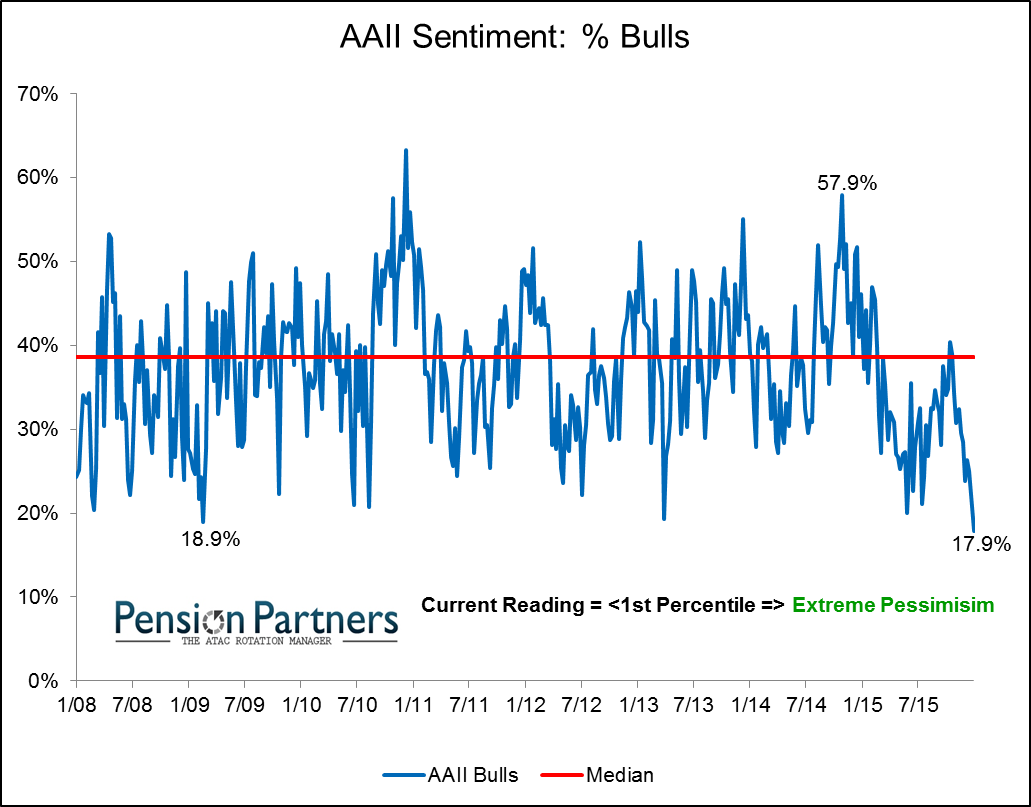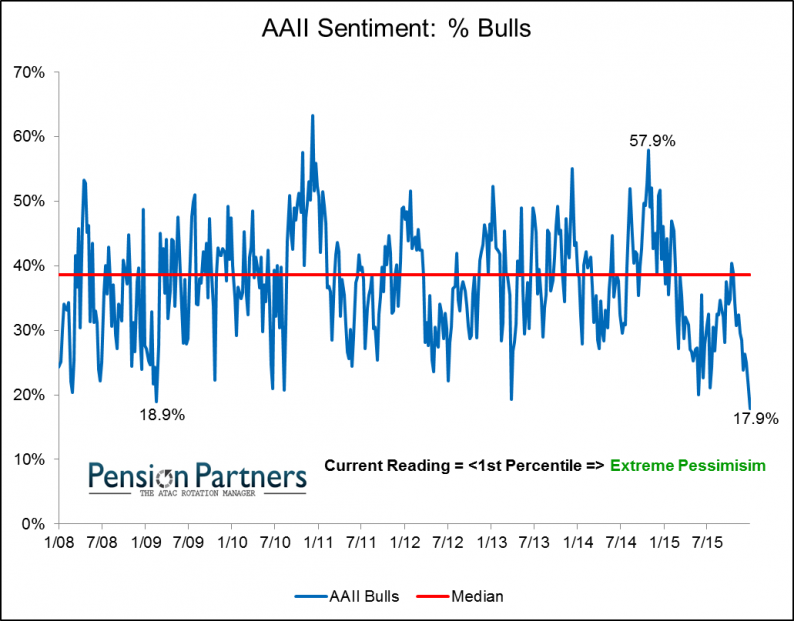Sentiment hit a number of bearish extremes last week and I tweeted out a few charts illustrating this shift in the mood of market participants. The most striking of these was the percentage of Bulls in the AAII (American Association of Individual Investors) poll dropping down to 17.9%, below the extreme low it reached in March 2009 (18.9%) after a 57% decline in the S&P 500.

The immediate response on twitter was predictable: 1) subjective opinions that there was not “enough fear” yet, 2) that the fear was more than justified because of xyz bad news (imminent recession, china, crashing oil, etc.), and 3) the times in history when sentiment was bearish and the market continued to go down.
I know better than to try to have an intelligent discussion via twitter, so let’s go through each of these responses here.
First, there is no way to test one’s subjective view of fear and greed. It is meaningless. While admittedly not perfect, sentiment indicators at least provide an objective measurement with data going back in time.
Second, high levels of fear are always associated with a lot of bad news. That is the nature of markets. When markets are down, we find reasons (whether true or not) to rationalize the declines. They always seem justified at the time but the question for markets is of course 1) how much bad news is already priced in, and 2) will the news ever get better (it usually does).
Lastly, in terms of the false positives (when sentiment is bearish and the market continues to go down): there is no holy grail. There is no indicator – sentiment, valuation, momentum or otherwise – that will be “correct” 100% of the time.
Does that fact render sentiment analysis useless? Only if you require 100% certainty in markets in which case you would never invest because such a thing does not exist. There are only probabilities in investing, and when sentiment is extremely bearish, the risk/reward has generally improved and your probability (not certainty) of higher future returns has increased.













Leave A Comment